How to clean a bathroom sink – expert tips for a well-scrubbed sink
Learn how to clean a bathroom sink for a polished finish with this expert advice

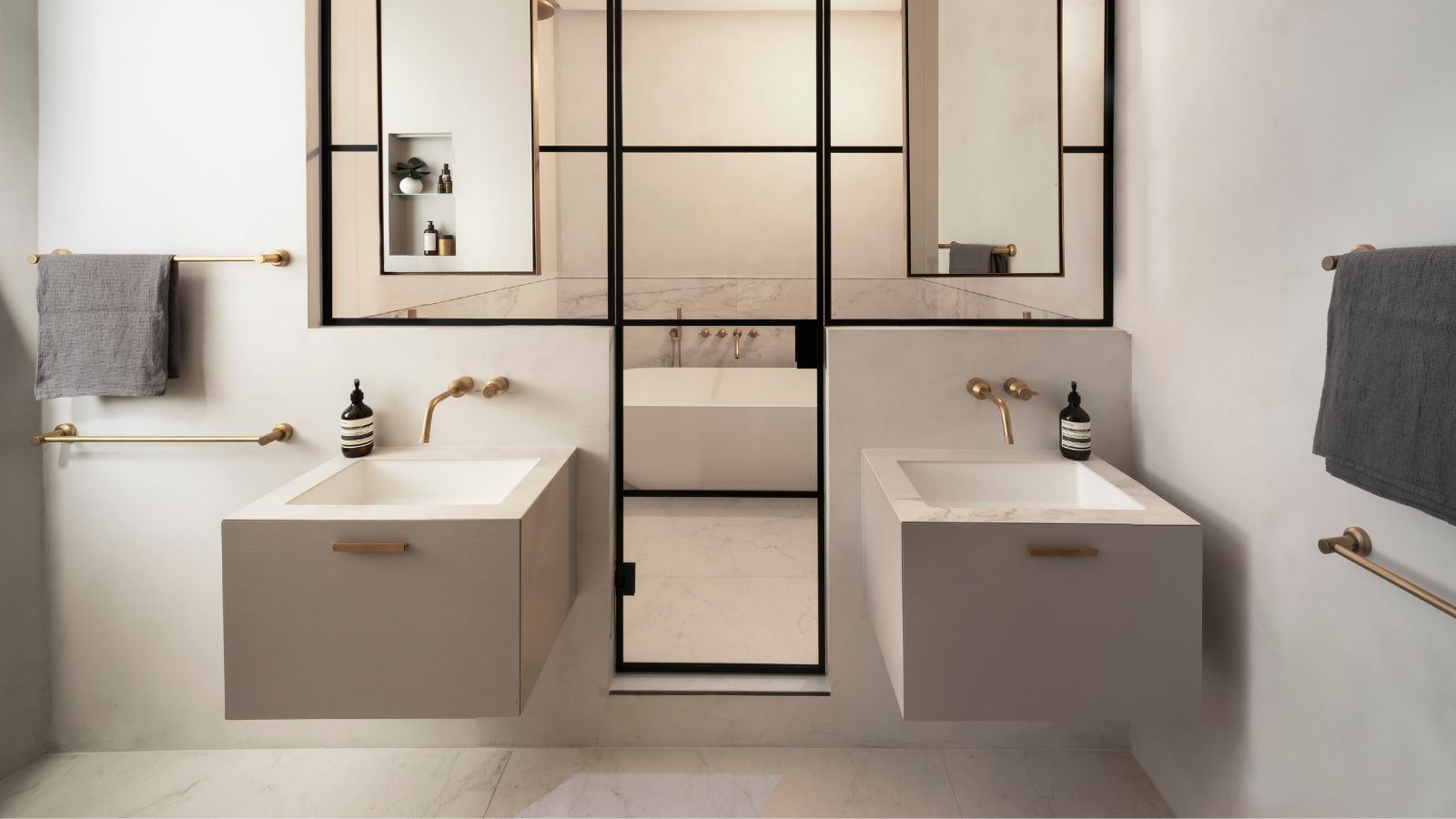
It is important to know how to clean a bathroom sink to keep it looking pristine. After all, the humble bathroom basin has much to cope with, especially in a family home. And of course, it's not just about appearances; hygiene is important if you are to prevent a buildup of bacteria and stop it getting blocked.
Many of us already know how to clean a bathroom, but the sink can often be under-cleaned as we focus on other, more obviously dirty fittings like the toilet and shower. Luckily, there are several cleaning tips to keep your bathroom sink like new.
Here, experts have shared their bathroom sink cleaning knowledge with Homes & Gardens so that your bathroom vanity ideas continue to shine.
How to clean a bathroom sink
Although it may seem obvious, it is important to clean a bathroom sink correctly. ‘Generally, the build-up of dirt can be from either soap scum and then calcium deposits, so the cleaning stage is a two-stage process for the different types of dirt,’ explains Mike Head, director at Atlas Ceramics.
Like when cleaning a kitchen sink you'll need to consider your bathroom sink's materials. While the most common is porcelain or ceramic, materials such as copper, brass, and other metals are becoming more popular when designing a bathroom vanity. These materials require a different cleaning approach.
With so many cleaning hacks you should avoid, it can be hard to know what works best. Fortunately, there are a few easy steps that ensure you get the most efficient clean.
1. How to clean a porcelain or ceramic sink
Shopping List
To regularly clean your bathroom sink efficiently, the following items are recommended:
• A good bathroom sink cleaner – such as Bar Keepers Friend from Amazon
• Cleaning cloths – such as these reusable cloths that can be washed
• Fine brushes – while an old toothbrush will do the job, you can find softer bristled cleaning brushes specifically for household cleaning
• A drying cloth – any microfiber cloth will work well, such as these ones from Amazon

General bathroom sink cleaning should be carried out once a week to prevent bacteria build-up. ‘Bathroom sinks are some of the most used spaces in the house, and it can certainly show,’ says professional cleaner Sara San Angelo, The Cleaning Lady, ‘Cleaning a bathroom sink is pretty simple if you have the right tools.
Design expertise in your inbox – from inspiring decorating ideas and beautiful celebrity homes to practical gardening advice and shopping round-ups.
‘A good cleaner is essential. Most bathroom sinks are porcelain. This is very easy to clean and Bar Keeper's Friend does a great job of cleaning porcelain and metal sinks. It will also take off rust if you have rust spots around the drain.
The faucet can be cleaned with Bar Keeper's Friend as well as long as it is not brushed nickel. It may be too harsh for the metal. To get the small spaces that collect gunk on and around the faucet, use an old toothbrush. Toothbrushes are a great cleaning tool to get to hard-to-reach spaces.'
Drainholes are some of the most common places in bathrooms people forget to clean, so using old toothbrushes can help you clean even the most negligible spaces.
You can find Bar Keepers Friend on Amazon, however, Mike warns that you should ‘always read the instructions and test a small area, so you can see the result first and avoid any possible damage.’
‘Before you start to really scrub any dirt and grime, it's a good idea to leave some bathroom cleaner to soak on the areas which will need the most care,’ recommends Tom Drake, bathroom expert at Drench. ‘Once you’ve allowed the cleaner to soak in you should be able to remove the majority of grime with ease. Use a soft cloth or sponge to do this and work from the top of the sink downwards. If you've got lots of limescale on either your faucets or the bathtub itself, this will require some extra care with your vinegar solution. This should also help with the whiteness of the sink.’
How to remove soap scum from porcelain or ceramic
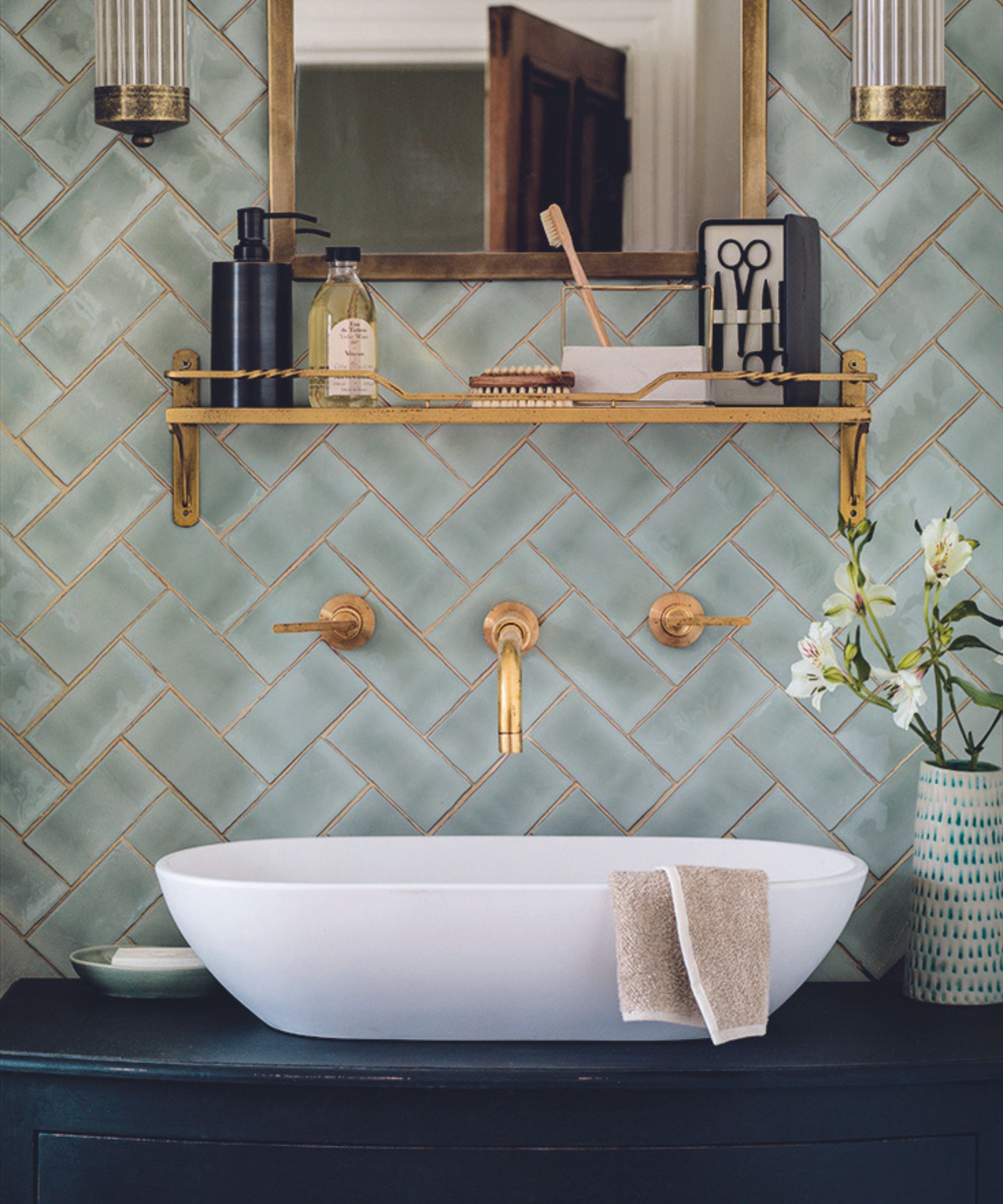
Soap scum is present on most fixtures and appliances that are subject to a mixture of soap and water and can ruin the appearance of your bathroom ideas. You can recognize soap scum by its white or gray chalky appearance that acts as a thin film over the surface of your sink and is most prevalent in areas with hard water.
If your bathroom has a build-up of soap scum, try a cleaner designed to remove it, such as Rejuvenate, which you can buy at Amazon.
'It’ll take time to remove the build-up, but if you don’t remove it properly, it will leave lasting damage,’ explains Mike. ‘Distribute the product evenly and allow it to work for up to 20 minutes, brushing occasionally. When the soapy deposits have dissolved, add water and brush away the solution from the surface. If you still have stubborn deposits, repeat the procedure when the surface is dry – this is key for large build-ups.’
Cleaning with vinegar can work here, too. You can make a soap scum remover by combining equal amounts of vinegar and water in a spray bottle with one tablespoon of liquid dish soap. Apply this solution to the scum and allow it to sit for 15 minutes or more before scrubbing with a soft-bristled brush to avoid scratching. Rise with hot water and repeat as necessary.
Break down calcium deposits on porcelain or ceramic
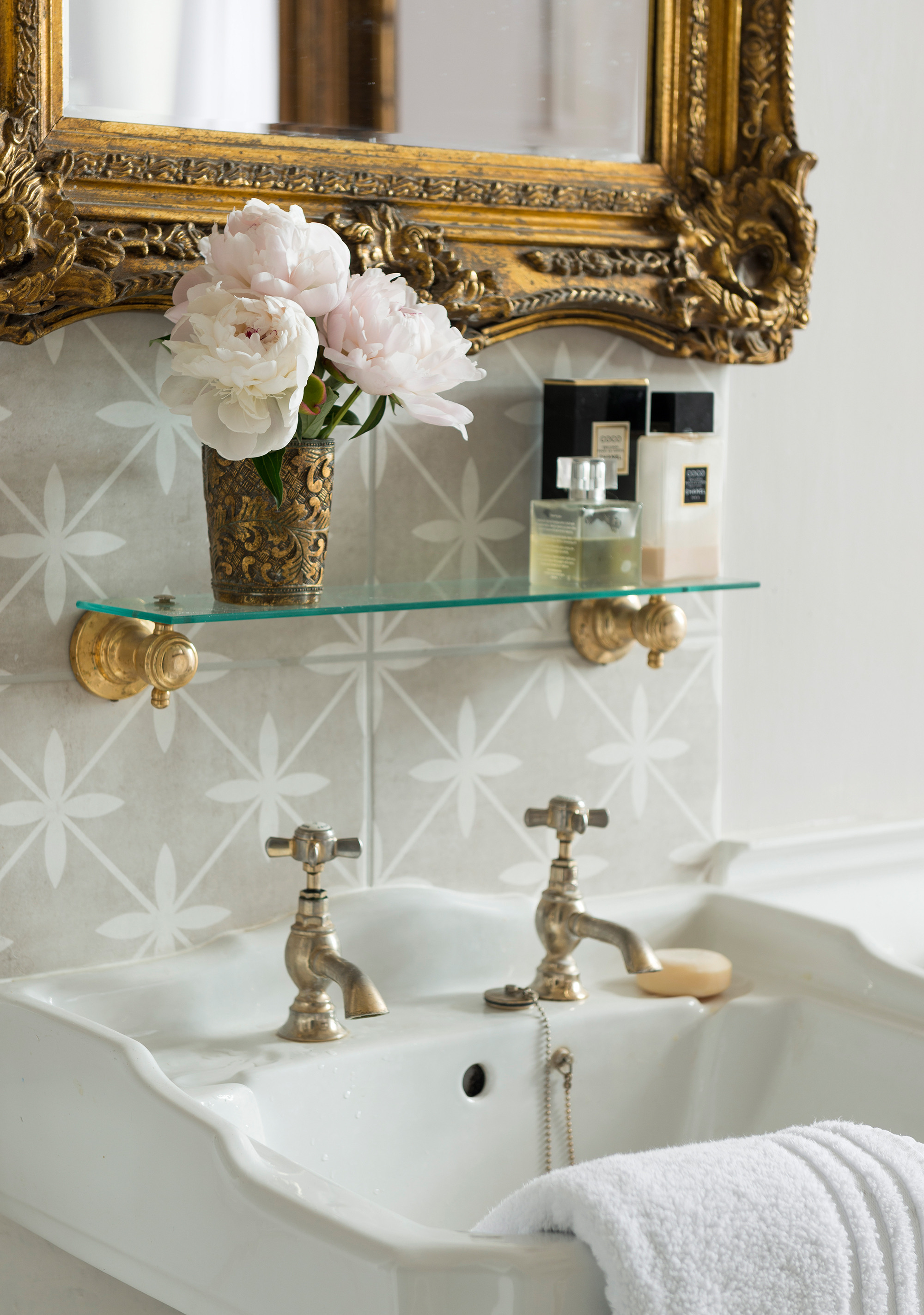
Calcium build-up, also known as limescale, can be easily mistaken for soap scum but can be harder to remove. For the removal of calcium deposits, Mike recommends a limescale cleaner specifically for sinks. Amazon sells CLR Calcium, Lime & Rust Remover, which is top-rated as an all-round bathroom sink cleaner.
‘Depending on the stubbornness of the dirt, dilute the product up to 1:15 and apply it to the surface with a brush or sponge,’ he adds. ‘On small areas, simply put a squirt of ceramic and porcelain on a wet sponge. Allow the product to work briefly, then rinse well with water. In case of very stubborn dirt deposits, use the product undiluted.’
2. How to clean metal bathroom sinks
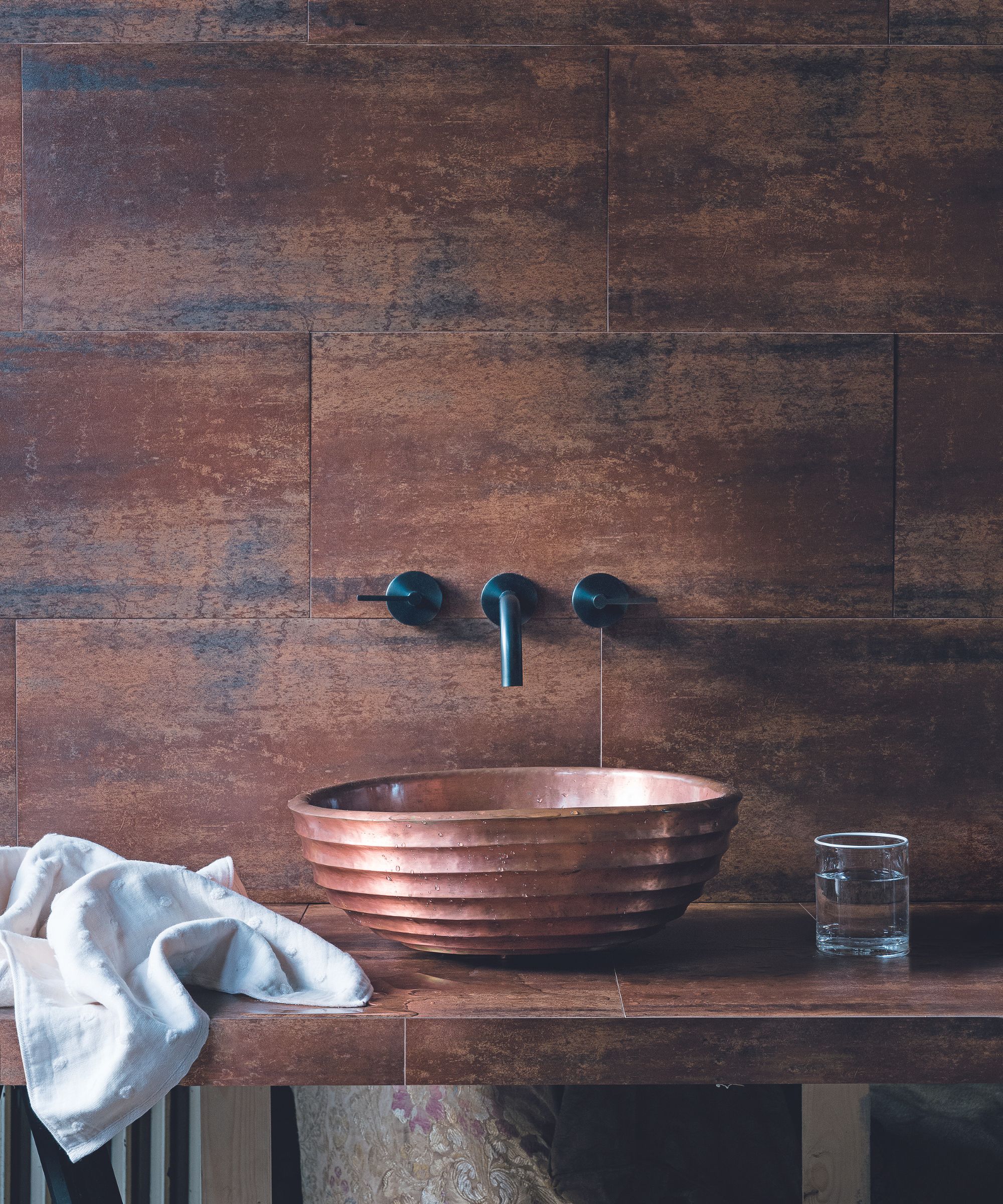
When it comes to cleaning metal bathroom sinks, be warned that many of the chemicals used for porcelain sinks can degrade the material and cause lasting damage.
'If your metal basin has an unlacquered finish such as copper or brass, you’ll need to routinely clean it with warm soapy water and a non-abrasive cloth and dry immediately after use,' explains Barrie Cutchie, design director at BC Designs. 'Avoid dripping taps, sharp objects, and the use of harsh chemicals.
'Maintain the finish by re-applying a suitable wax seal (we recommend Renaissance Wax) regularly every four to six weeks depending on use. More usage will require more maintenance. If the wax wears off and oxidization develops on the copper surface, clean the bath with a fine metal cleaner, and then re-apply the wax.
'If your basin has a plated finish, such as nickel, regularly clean it with warm soapy water and a nonabrasive cloth, and the wax seal should be maintained by regular reapplication. Do not use abrasive metal cleaner on nickel-plated items as this could wear through the finish. A small amount of Peek metal cleaner can be used on minor tarnishing. '
'If you decide on a tin basin, it does not require much maintenance – just use Brillo Pads and warm soapy water will do the trick when it comes to cleaning it.'
3. Clean out your bathroom sink's drain
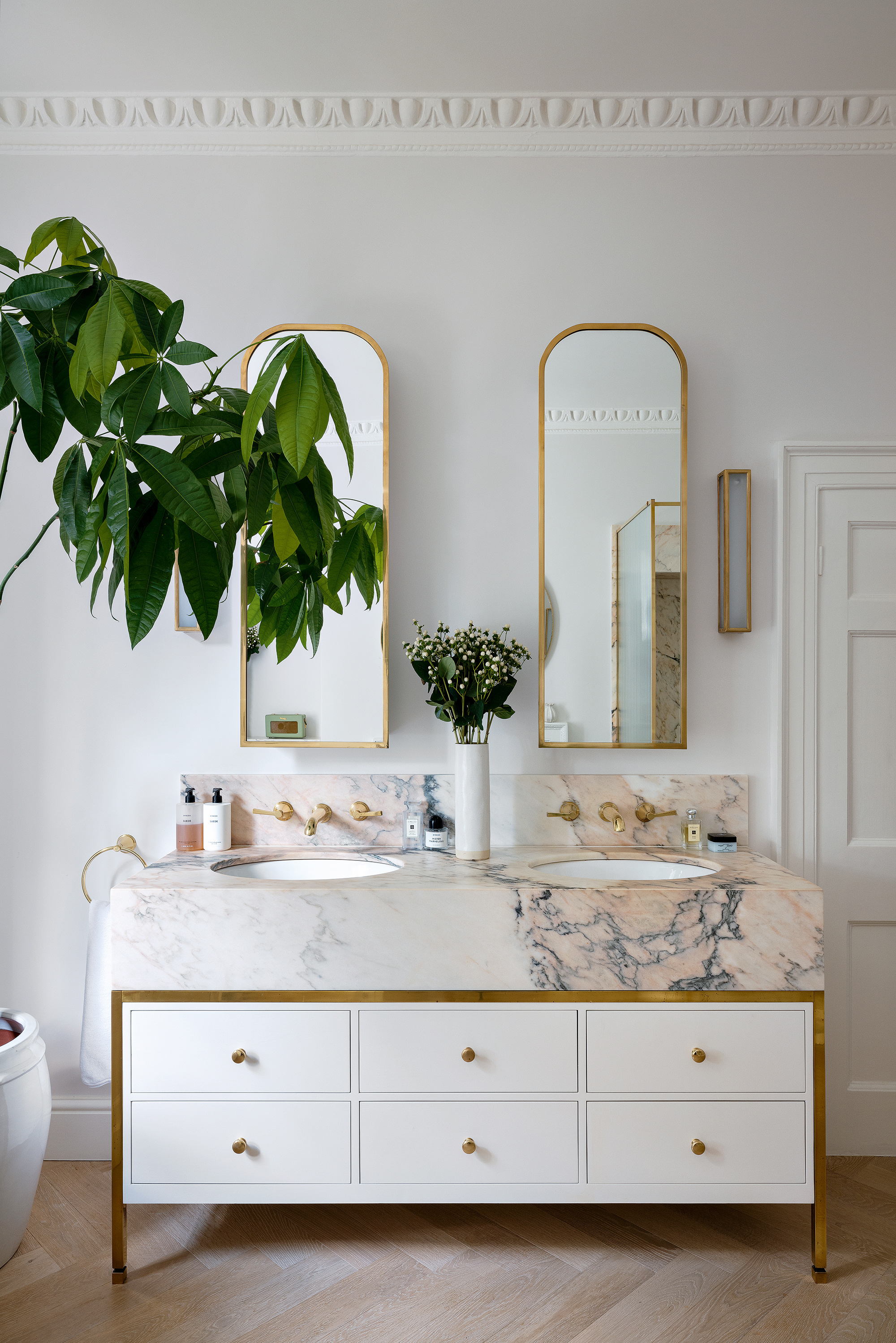
Bathroom sinks are prone to blockages due to hair build-up, this can lead to slow draining or smells, though there are plenty of other reasons why your sink won't drain. When this happens, it is good to know how to unclog a sink. Completing regular cleaning can help prevent blockages from forming.
‘To stop your sink smelling, you will need to clear any blockages which are causing the smell. We recommend five methods for this: using boiling water, a plunger, white vinegar, caustic soda, or checking the U-Bend,’ recommends Tom Drake, bathroom expert at Drench.
‘Pour a cup of white vinegar down the drain, let it stand for 30 minutes, then rinse with hot water. Alternatively, caustic soda, (sodium hydroxide) is also very effective for unblocking sinks and plug holes.
'To unblock a sink using caustic soda, we would recommend using a solution of around 10%. To create a 10% solution of caustic soda, simply dissolve one cup of sodium hydroxide crystals into one liter of water.
'Simply pour the 10% solution down the drain and let it get to work; it is recommended to leave caustic soda to work its magic for around half an hour to break down any deposits in the sink. When five minutes have passed, slowly run some water into the sink, increasing the water pressure. If it isn’t clear, repeat the process of creating a solution and pouring it down the sink until the drain appears to be clear,’ he explains.
What is the easiest bathroom sink to clean?
The easiest bathroom sink material to clean is porcelain or ceramic. These sinks often come in durable, high gloss finishes that make the sinks stain-resistant and easy to keep clean.
It's important to know, however, that these materials may scratch easily when you use harsh abrasives such as cleaners or brushes.

Chiana has been at Homes & Gardens for two years and is our resident 'queen' of non-toxic living. She spends most of her time producing content for the Solved section of the website, helping readers get the most out of their homes through clever decluttering, cleaning, and tidying tips. She was named one of Fixr's top home improvement journalists in 2024.